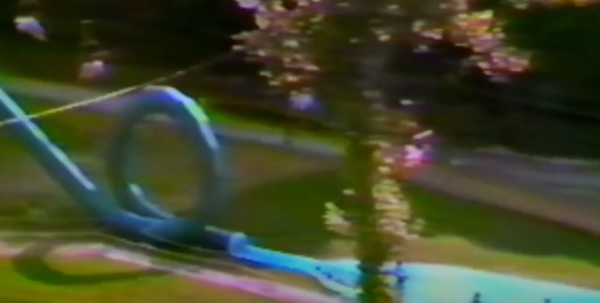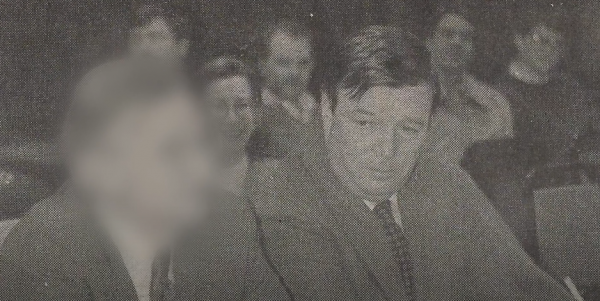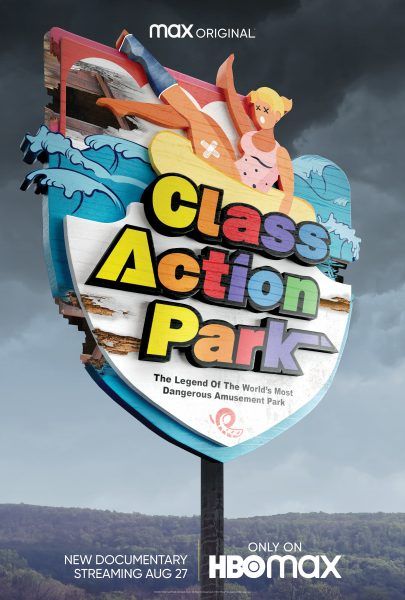I am a wuss. It’s part of my personality. I’m scared of most things and tend to avoid danger at all costs. I’ve always been this way. Had I lived near Action Park, I probably would have avoided it like the plague, but I am also deeply uninteresting. For those that braved the infamous amusement park, they’ve come away with darkly comic tales that fill the majority of Seth Porges and Chris Charles Scott III’s HBO Max documentary Class Action Park. The first hour of the documentary goes ride-by-ride of how people were horribly injured and sometimes killed in an amusement park devoid of rules. The documentary briefly explains how the park operated for so long endangering so many people, but it’s not until its final half-hour that it tries to reconcile these fun tales of battle scars with those who died because they had the audacity to go to Action Park. At the end, even the filmmakers seem confused at how seriously they’re supposed to take what happened at this reckless amusement park.
Action Park was the brainchild of Gene Mulvihill, a Wall Street guy who, with backing from fellow corrupt Wall Street guy Bob Brennan, purchased some land in Vernon, New Jersey and decided to turn what was a winter ski resort into a summer amusement park dubbed Action Park. The allure of the park was that the rides were built will little thought to safety or even engineering or physics. The documentary then goes through the many dangerous rides, but one talking head’s experience on the “Cannonball Loop” could just as easily apply to the other attractions: “The loop was fun, and yes, it hurt.” The appeal of Action Park was that in an age of deregulation and latchkey kids, there was a venue with no rules, essentially overseen by teenagers, and there was the thrill of knowing you could be seriously injured. It’s not until you reach the death of George Larsson in 1980, the first of six recorded deaths, that the documentary tries to grapple with a legacy that wasn’t merely a dark coming-of-age ritual for kids living in the tri-state area.
The majority of Class Action Park is just a series of talking heads explaining how a ride was dangerous, some animation illustrating the dangers of said ride, and then repeat with a different attraction. This is then sprinkled with explanations of how Mulvihill was able to continue operating such a dangerous business, and sadly, that broader picture provides a more interesting, if not as colorful, tale than what went down on the Alpine Slide or Colorado River Ride. The tales behind the attractions are juicy, but when you put them one after the other, it becomes more of a “cool story bro,” building up the legend of Action Park when a documentary should serve to illuminate complicated realities rather than burnishing a mythology. I can’t deny that these stories are entertaining, but Class Action Park repeatedly comes close to a romanticization of an era and place that objectively endangered and harmed children for profit. For those that experienced it, there’s some perverse glee in surviving, but that glee vanishes when confronted with a story about someone who wasn’t so lucky.
In its final half-hour, the film drastically changes tone to tell the story of George Larsson and how he died in July 1980 going down the Alpine Slide when his slide left the track and he was flung headfirst into a pile of rocks. Mulvihill, with his power and influence in the community, was essentially able to cover up the death and manipulate the legal system to prevent Larsson’s family from any kind of meaningful recompense. In this larger framework, Class Action Parkbecomes a far more damning portrait of an era not marked by kids who would, to quote comedian and attendee Chris Gethard, “try to die for fun.” When you look at Larsson’s story, you see gross negligence, greed, corruption, and a produce of 80s deregulation where “freedom” means a casual cruelty in exchange for easy profits.
But then Class Action Park turns away and kind of shrugs at how you can have a place that’s both nostalgic and kind of evil. I get that it’s fun to tell story after story of how dangerous this place was, and there’s an odd kind of community that pops up when you experience a shared danger that’s genuinely dangerous. But the larger questions of how Action Park exists get pushed to the margins in favor of this dark nostalgia. At some point you need to draw a line and say “Maybe all this suffering is real and traumatic, not gnarly and awesome.”
And perhaps that’s me just being a humorless scold and a wuss who doesn’t understand why people would try to die for fun. Maybe I truly do not get it, but Class Action Park brings me no closer to understanding. I can enjoy the dark comedy of these horrific rides, but even that becomes a bit infuriating after a point because you’re looking at a system that’s profiting off suffering where the reality of that suffering almost becomes an afterthought. Either the consequences of these rides were dire, or they were fun anecdotes where we can laugh by virtue of survival. Action Park was a world without rules, and for Class Action Park, the major takeaway seems to be some war stories with only a slight nod to the reality that people die in a war.
Rating: B-




